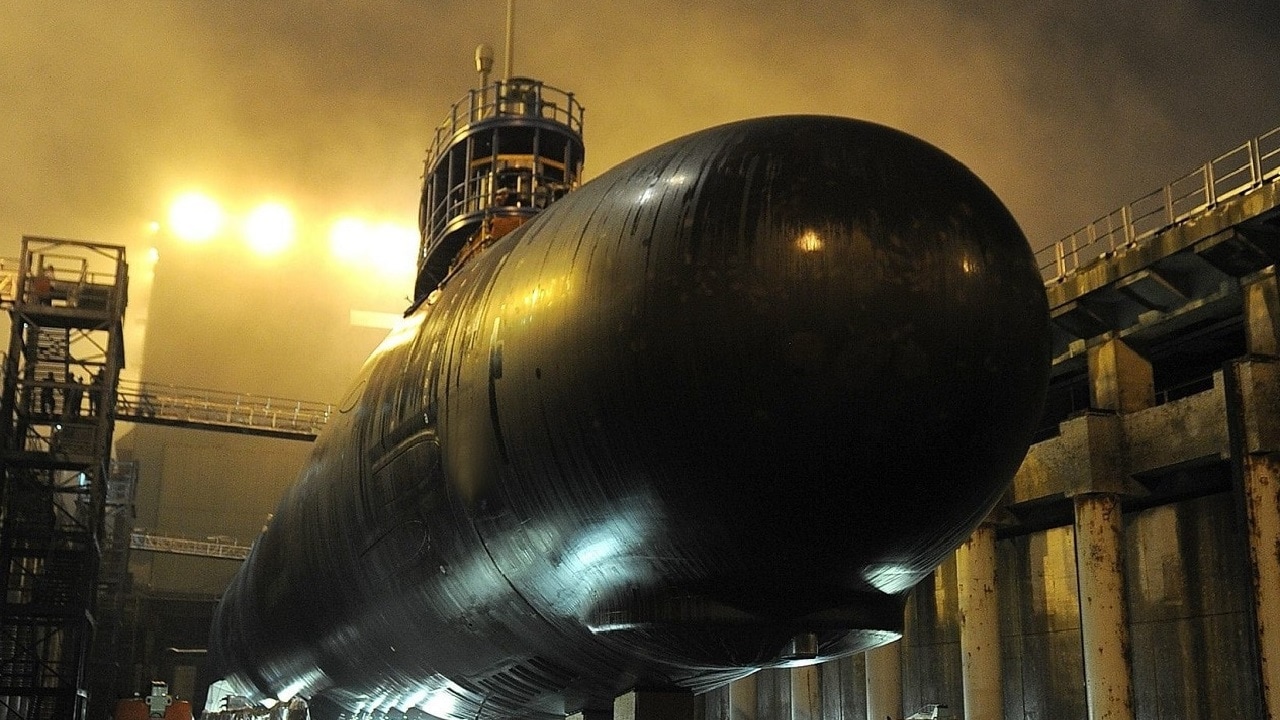Virginia-Class Block V Submarine Designed to Mitigate Missile Gap – The first two Block V Virginia-class submarines are currently under construction in Groton, CT. Four more have been ordered. The Block Vs, which feature improvements over the existing Blocks I-IV Virginia-class subs, could serve into the 2070s.
The Virginia, a fast-attack sub, was designed as a cheaper alternative to the $2.8 billion Seawolf-class submarine—whose production was cancelled after just three boats were completed. The Virginia, by comparison, goes for $1.8 billion. Both the Virginia and the Seawolf were designed to replace the aging Los Angeles-class fleet.
21 Virginia subs, mostly Blocks I-III, are already in service. Three Block IV subs are in service, with one more launched, and six more under construction. The Block IV is a fine boat, but the Block V was modified to address a growing concern amongst US military planners: the “missile gap” between the US and China in the Pacific region.
China has a head start on missile procurement
Despite enjoying 40 years of peace, China has engaged in an unprecedented military build-up—augmenting their navy, air force, nuclear arsenal, and conventional arsenal—all while making expansive sovereignty claims in the South China Sea. The US, preoccupied during two decades of war in the Middle East, fell behind China in the Pacific region. China now has the world’s largest navy. But perhaps more concerning is China’s overwhelming advantage in cruise and ballistic missiles.
China doesn’t just have more missiles than the US—China’s missiles have greater range. In fact, China has a near-monopoly on intermediate-range missiles. Under the Intermediate-Range Nuclear Forces Treaty (INF), a Cold War agreement between the US and Russia, the US was prohibited from deploying missiles with a range between 500 and 5,500 kilometers. China, however, never signed the INF, leaving them free to deploy intermediate range missiles in massive numbers. The Trump administration withdrew from the INF—and now the US is scrambling to close the missile gap.
China’s impressive missile arsenal was designed to disable the aircraft carriers, surface warships, and network of bases “that form the backbone of American power in Asia.” The slated retirement of the US Navy’s Ohio-class ballistic submarines within the next decade will exacerbate the missile gap further. To remedy the problem, US war planners are working to deploy more missiles to the region. The Virginia-class Block V sub was designed with that objective in mind.
The Virginia-Class Block V will carry three times more missiles than the Block IV
To improve the Virginia’s conventional weapon payload, the Block V will incorporate a revolutionary new concept: the Virginia Payload Module (VPM). The VPM is a form of “hull plug,” which will be used to increase the Virginia’s payload. With the VPM, the Block will be able to carry three times more Tomahawk missiles than the Block IV.
Today, and in the near future, the VPM will accommodate Tomahawk cruise missiles. But the VPM is being designed for compatibility with future payloads, too. Proponents boast that the hull plug is revolutionary for the ease in which it will be reconfigured to support new missions and new technology over the Virginia’s 30-year service life.
Assuming the Virginia’s construction and roll-out go as planned, the question remains, will the US be able to close the missile gap?
Harrison Kass was born in New York City and raised in Newtown, Connecticut. He has since lived in ten U.S. states, plus New Zealand. Kass is currently pursuing a Master’s in Journalism and International Relations from NYU. Harrison is an attorney, pilot, guitarist, and pro hockey player. His top five movies are: The Natural, Hook, Top Gun, E.T., and Field of Dreams. He regularly listens to Dokken.

